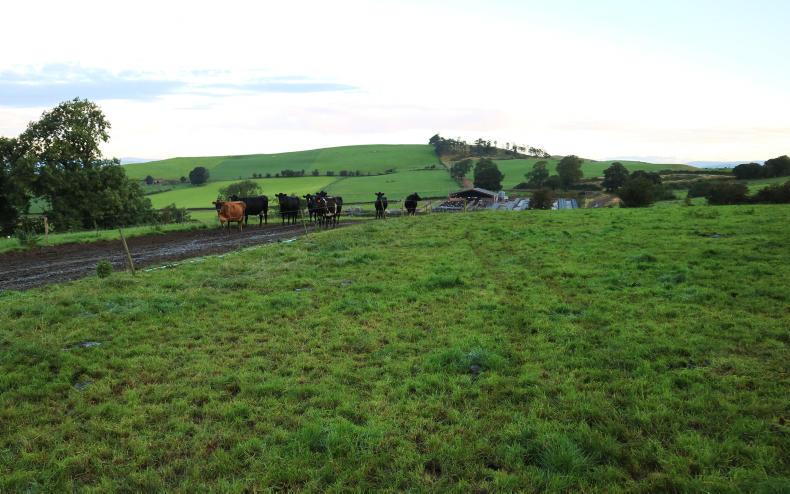The weather has been very wet, in case it escaped anybody’s attention. We are now sitting at 11 litres per cow, however, it is at a butterfat of 6.17% and protein of 4.20%, leaving MS per day of 1.14. This is lower than our peers and we have been looking into the reasons for this.
We had a group here one day and they felt that we were walking a huge amount of milk off the cows when we walked them to the back of the farm during the main grazing season. They were fairly sure that it could be costing us between four to five litres per day, for every day we do this.
So for next year, once the farm is grazed off the first time over spring, we will set up a grazing platform close to the parlour.
Anyway, back to the weather, growth has remained good throughout, with the last few weeks showing growth rates of 60-70kg DM grass/ha/day. We have built up to an average cover of 2480 DM grass per ha. We do feel this is a bit low, however, in the current grazing conditions (which on some days can only be described as grim) the slightly lower-than-desired grass covers are grazing out better than if we have had very high covers to chomp through.
We increased the meals to 3kg about two weeks ago and will introduce silage this week. At the same time we will move to once-a-day milking.
We have to be very careful to protect cow condition now for next season.
Keeping cows on twice-a-day and walking can walk condition off cows very quickly, not to mention causing huge amounts of lameness.
We started last year to bring in an outside consultant to condition-score (CS) the herd and we will do the same again this year. The procedure is to CS every cow, then our consultant takes the calving dates and inputs everything onto a spreadsheet.
In short, we dry off cows according to CS and length of time to calving. This has left cows in a very good place at the start of calving and we feel it has increased MS production.
Also, the cows have held their condition a lot better throughout the year, so hopefully we can milk on a bit longer with some of them this year.
We scanned cows and had 10.5% empty, a little higher than we would have liked. However, the heifers were at 5.5%. So the numbers for next year now stand at 936 in calf, with both cows and heifers combined.
Measuring grass
We are reasonably happy with this. We had a staff training day to go into the grass measuring. I have to confess that even though I have been doing this for 25 years or more, I did learn quite a bit myself. We feel that while the guys do a very good job of allocating grass, that they never really measured the grass themselves.
They had, therefore, requested this training to allow them to do more of this type of work and since I am all into delegation, I think this is an excellent idea.
It has been a very good year, despite the disappointing end to the season weather-wise, with milk prices up and grass growing well.
Hopefully, the milk market will remain fairly stable going into next year. The indications are reasonably good, though I am always a little nervous when we go north of 30ppl, as this seems to drive production a little crazy, however, having said that, the last crash was a bit of a perfect storm.
There will be a down-cycle; hopefully it will not have all the ingredients to cause the same events of 2015-2016. There seems to be a gradual move toward more milk buyers offering fixed milk-price contracts for varying percentages of their supply, which is to be applauded.
It makes sense for both the seller and the buyer to go into these arrangements, as it protects both parties from the severe ups and downs of the marketplace.
